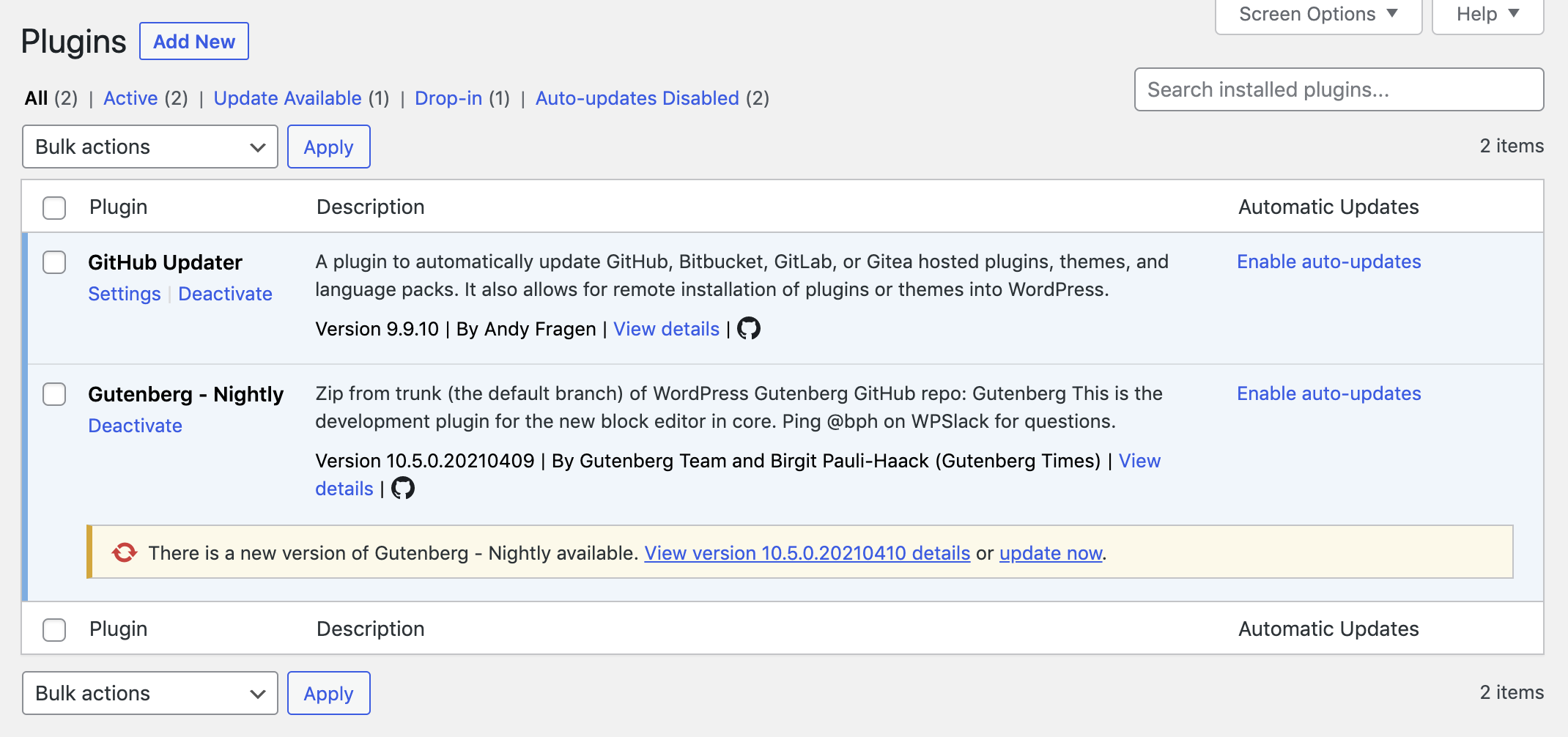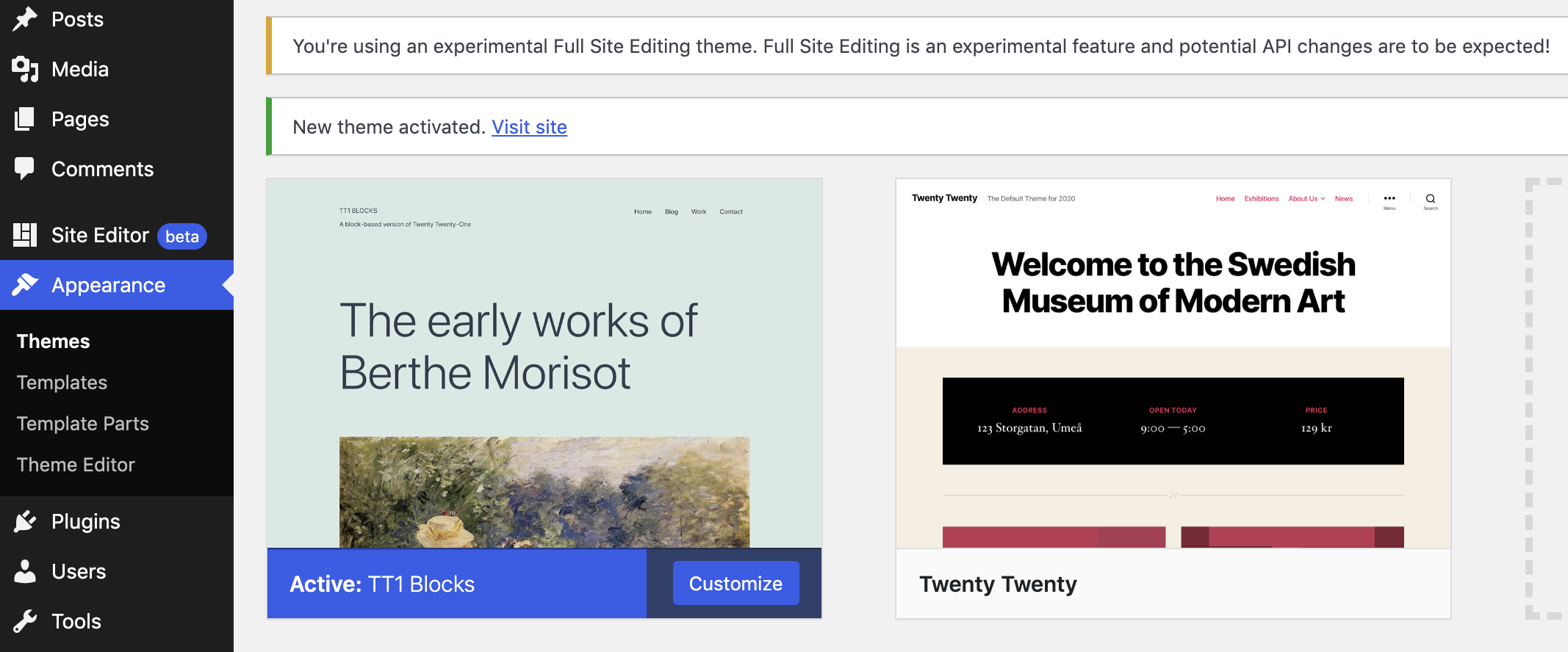WordPress contributors are working towards landing full site editing (FSE) sometime this year, an ambitious plan that will require all hands on deck for testing. A meeting of a small group of core leads on April 14 will start the process of deciding whether FSE will land in version 5.8. In the meantime, the FSE outreach program has extended the deadline for the fourth round of testing until April 12.
One of the quickest ways to get started doing alpha/beta testing is to install the Gutenberg Nightly plugin, which pulls in the latest build from the Gutenberg project. Ordinarily, to get the latest build one would have to install NodeJS and npm and use the command line to get set up. This process can be prohibitive, along with the dizzying pace of Gutenberg development, for less technical users who want to start testing.
The Gutenberg Nightly plugin, combined with the GitHub Updater plugin completely automates the process of grabbing the latest zip from Gutenberg trunk, and users will be notified when a new nightly is available for updating.
How to Set Up a Gutenberg Nightly Test Environment
The first step is to download and install the Gutenberg Nightly plugin by uploading the zip file. If you already have the stable version of the Gutenberg plugin, you will be prompted to replace the current version with the one you are uploading. If you want to get updates when a new nightly is available, download and install the GitHub Updater plugin the same way.

Testing the full-site editing project will require you to install a theme like TT1 Blocks, which has support for the experimental feature. Once you do, you will see the “Site Editor (beta)” menu item in the dashboard.

I set up a Gutenberg testing environment in 2 minutes using these plugins. Please note that it’s not recommended to use Gutenberg Nightly in production.
Birgit Pauli-Haack, publisher of the Gutenberg Times, created the plugin in October 2020, to help testers keep up with the rapid pace of Gutenberg development.
“On October 19, 2020, there were 250 new commits made since the last release (9.1.1) and before the release of 9.2,” Pauli-Haack said. “Any issue you might file, might get a response like ‘Could you please try it in master, I think it was already fixed.’” This slows down the testing process and can be discouraging to testers.
Pauli-Haack creates the build every day as a volunteer service to facilitate Gutenberg testing.
“At the beginning it took a bit longer but now I wrote a small Node CLI script that does the distribution to GitHub and uploads it to the GT site as well, so the button Download gives you the newest version,” she said. “In October, I was a total rookie with an idea.”
Pauli-Haack credits Andy Fragen, author of the GitHub Updater plugin, and Riad Benguella, a technical lead on the Gutenberg project, who helped her past some skill gaps in getting the process more automated.
“Andy Fragen helped me think through it for making it the easiest for the ‘normal’ users to get a Test version without to know much about git, node and stuff,” she said.
Gutenberg Nightly has facilitated more than 62,000 downloads to date. The repository for the plugin has discussions enabled so users can stay updated with major changes, make feature requests, and participate in Q&A.
I don’t think so it’s easy for a normal user to try this plugin.